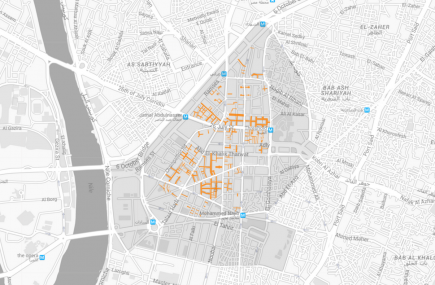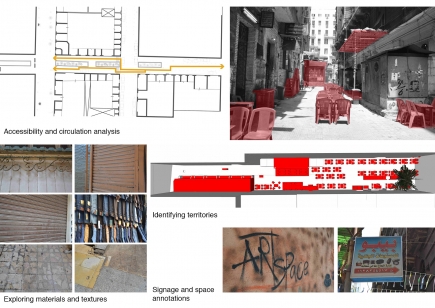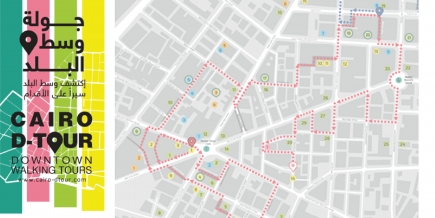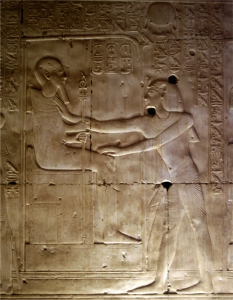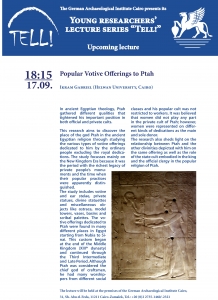| Theme: | |
| Format: | |
| Date: | Sep 17, 2014 6:15pm |
| Organized by: | DAI - German Archaeological Institute Cairo |
| Venue: | DAI - German Archaeological Institute Cairo |
| Address: | German Archaeological Institute, Cairo Department 31, Abu el-Feda, Zamalek, Cairo, Egypt |
| Event Language: | English |
In ancient Egyptian theology, Ptah gathered different qualities that tightened his important position in both official and private cults. This research aims to discover the place of the god Ptah in the ancient Egyptian religion through studying the various types of votive offerings dedicated to him by the ordinary people excluding the royal dedications.
The study focusses mainly on the New Kingdom Era because it was the period with the richest legacy of private people’s monuments and the time when their popular practices were apparently distinguished.
The study includes votive and ear stelae, private statues, divine statuettes and miscellaneous objects like Ostraca, model towers, vases, basins and scribal palettes. The votive offerings dedicated to Ptah were found in many different places in Egypt starting from Nubia to Sinai.
This custom began at the end of the Middle Kingdom (XIIIth dynasty) and continued through the Third Intermediate and Late Period. Although Ptah was considered the chief god of craftsmen, he had many worshippers from different social
classes and his popular cult was not restricted to workers. It was believed that women did not play any part in the private cult of Ptah; however, women were represented on different kinds of dedications as the main and sole donor.
The research also sheds light on the relationship between Ptah and the other divinities depicted with him on the same Offering as well as the role of the state cult embodied in the king and the official clergy in the popular religion of Ptah.


